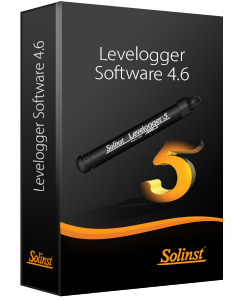How deep can I install my Levelogger?
- The depth of submergence for the Levelogger (at the highest expected water level) is based on the specified pressure range for the instrument. The Levelogger 5 and Levelogger 5 LTC are available in the following pressure ranges:
Pressure Range: Maximum Submergence to Achieve Stated Accuracy: M5 5 meters (15 feet) M10 10 meters (30 feet) M20 20 meters (65 feet) M30 30 meters (100 feet) M100 100 meters (300 feet) M200 200 meters (600 feet) - The Levelogger 5 Junior is available in M5 and M10 pressure ranges.
Note: Levelogger 5 and Edge Series dataloggers can be over-pressurized 2 times (1.5 times for Gold Models) the stated submergence/calibrated range without damage to the pressure sensor, allowing for deployment flexibility.
How do I install my Levelogger in a groundwater well?
- Since Leveloggers are designed to record water level and temperature fluctuations over time (conductivity available with Levelogger 5 LTC), for successful performance in a groundwater application, they should be installed just below the lowest expected water level for that well.
- Leveloggers are installed by using either a suspension line or direct read deployment. In both deployment options the instruments are freely suspended, from the top of the well to the desired depth, via a support line (stainless steel or Kevlar cord) or a direct read communication cable. The suspension wire offers a lower-cost installation method that is ideal for shallow groundwater wells. The Direct Read Cable enables communication with the deployed Levelogger at the well head.
- See the Solinst Levelogger Deployment and Communication Guide
How do I install my Levelogger in a surface water application?
- For installations within rivers, streams, wetlands, lakes and watershed or drainage basin monitoring, the shallowest pressure range Levelogger (M5) should be considered.
- Also, consider using the Solinst LevelVent 5 or AquaVent 5 vented water level dataloggers for highest accuracy in shallow water applications.
- For direct installation in streams or rivers, stilling wells can be constructed which shield the instrument from the water turbulence. Alternatively, Leveloggers can be lowered into a protective pipe or casing and then attached to a permanent fixture such as a bridge, pier or hand driven marker/rod.
- In these types of applications, Solinst recommends that a Barologger also be used, to accurately account for barometric pressure fluctuations.
- See Technical Bulletins: Long-term Open Channel and Surface Water Monitoring with Leveloggers and Absolute Vs Vented Water Level Dataloggers – Which Method Is Right For Your Project?
How do I install my Barologger?
- The Barologger is designed to record barometric pressure fluctuations, and hence should be placed where it can capture changes in atmospheric conditions. For groundwater or surface water applications, it is recommended that the Barologger be suspended in a monitoring well or stilling well above the highest expected water level. The Barologger should be installed in a similar thermal environment to that of the Leveloggers. Typically one Barologger can cover a radius of 30 km (20 mile) and/or every 300 m (1000 ft) elevation change.
Should I use the Zero Point of the Levelogger, or measure the length of a deployed Kevlar Cord, Wire Line, or Direct Read Cable to calculate water levels?
- Accurately measuring the length of the deployment assembly/ cord, can be problematic—especially in the field, where you don't want the deployment to come in contact with the (dirty) ground surface. Also, to achieve consistent accurate measurements, you would need to ensure that you have the same amount of measured tension on each assembly. Without having a consistent amount of pulled tension, your measured accuracy will likely be much less than that of the Levelogger. Measuring deployed assemblies to determine water levels, is typically not practical, nor needed.
- Before deployment, and before each data download, Solinst recommends measuring the depth to water with a highly accurate water level meter, as well as recording the clock time. Using the Levelogger Software, you now have the ability to add all of your specific clock time "Field Zero" readings into the Data Wizard, allowing all water level readings to be accurately adjusted to that specific clock time and depth.




